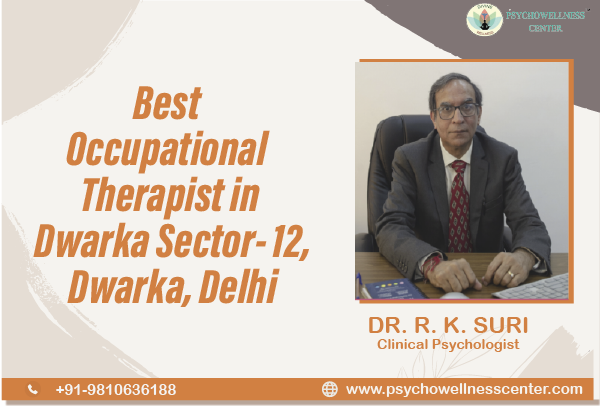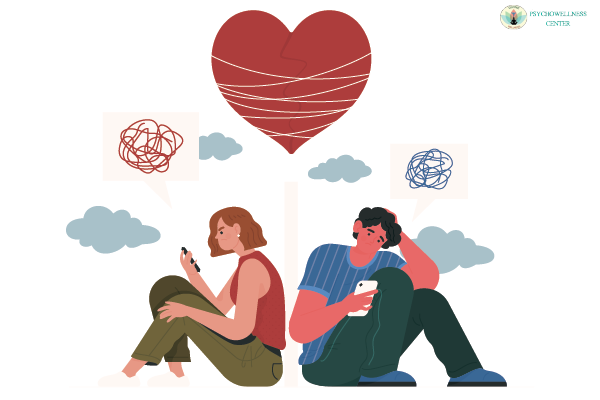Best Occupational Therapist in Dwarka Sector 12 Dwarka Delhi

Chronic pain can be debilitating, affecting not just physical well-being but also mental and emotional health. Individuals experiencing persistent pain often struggle with stress, anxiety, depression, and even panic attacks due to the overwhelming impact on daily life. Occupational therapy (OT) offers a holistic approach to pain management by improving functionality, promoting independence, and addressing the psychological aspects of pain.
Understanding Chronic Pain and Its Impact
Chronic pain is defined as pain that persists for more than three months, often resulting from conditions such as arthritis, fibromyalgia, back pain, migraines, or nerve damage. Unlike acute pain, which signals injury and fades with healing, chronic pain can persist long after the initial cause has healed, leading to:
- Physical limitations, restricting mobility and daily activities.
- Mental health challenges, including depression, anxiety, and panic.
- Low self-esteem and self-confidence, due to reduced independence.
- Increased stress, which can worsen the pain itself.
This cycle of pain and emotional distress makes a comprehensive treatment approach essential. Occupational therapy, combined with psychotherapy, plays an important role in breaking this cycle.
The Role of Occupational Therapy
Occupational therapists focus on improving a person’s ability to perform daily activities despite pain. They help individuals adapt their environment, modify tasks, and develop coping strategies to enhance self-confidence and reduce stress. Here’s how OT can make a difference:
1. Activity Modification and Energy Conservation
Occupational therapists teach individuals how to modify daily tasks to reduce pain and fatigue. Techniques include:
- Using ergonomic tools to minimise strain on joints and muscles.
- Learning proper body mechanics to prevent unnecessary stress.
- Incorporating rest breaks to conserve energy and avoid overexertion.
These modifications enable individuals to complete daily activities without aggravating their pain, leading to greater self-esteem and independence.
2. Pain Management Techniques
OTs incorporate various pain management strategies, such as:
- Heat and cold therapy to relieve muscle tension.
- Breathing exercises and mindfulness to manage pain perception.
- Gentle stretching and movement therapy to maintain flexibility and reduce stiffness.
By integrating these techniques, occupational therapy helps individuals gain control over their pain, reducing feelings of anxiety and panic attacks associated with chronic discomfort.
3. Sensory Integration Therapy
For individuals with heightened pain sensitivity, sensory integration techniques help the nervous system process pain signals more effectively. This is particularly useful for conditions like fibromyalgia, where even light touch can cause discomfort.
4. Cognitive Behavioral Strategies for Pain Perception
Occupational therapy often integrates cognitive-behavioral therapy (CBT) principles to help individuals change their perception of pain. This approach, often used in psychotherapy, helps:
- Reduce catastrophic thinking about pain.
- Improve coping mechanisms for stress and anxiety.
- Enhance motivation and self-confidence in managing daily tasks.
- This combination of physical and mental techniques makes OT an essential part of a holistic pain management plan.
Psychotherapy and Occupational Therapy: A Holistic Approach
Pain is not just physical, it has a strong emotional component. Many individuals with chronic pain experience depression, trauma, and low self-esteem due to their limitations. This is where psychotherapy is important.
1. Addressing Emotional Trauma Related to Pain
Chronic pain can be linked to past trauma, including injuries, surgeries, or emotional distress. Psychotherapy, combined with occupational therapy, helps individuals process these experiences and reduce the psychological burden of pain.
2. Managing Anxiety and Stress
Occupational therapy incorporates stress-management techniques, such as:
- Progressive muscle relaxation to reduce tension.
- Mindfulness meditation to focus on the present and decrease anxiety.
- Guided imagery and visualisation to alter pain perception.
When combined with psychotherapy, these techniques create a powerful approach to managing both physical and emotional distress.
3. Rebuilding Self-Confidence and Self-Esteem
Chronic pain often leads to feelings of inadequacy, as individuals struggle to perform everyday tasks. Occupational therapy helps restore self-esteem by setting realistic goals and celebrating small achievements. This process enhances self-confidence, encouraging individuals to take an active role in their recovery.
How Experts at Psychowellness Center Can Help
The specialists at Psychowellness Center use a multidisciplinary approach, combining occupational therapy, CBT, and stress management techniques to help individuals regain independence despite chronic pain.
- Dr. R K Suri With extensive experience in psychotherapy and rehabilitation, Dr. R K Suri focuses on the emotional and cognitive aspects of pain, helping individuals break free from negative thinking patterns and regain self-confidence.
- Mr. Utkarsh Yadav integrates physical rehabilitation techniques with mental health counselling, ensuring that chronic pain patients receive comprehensive care that addresses both physical and emotional challenges.
- Dr. Kamal Agarwal specialises in behavioral techniques, helping individuals modify their daily activities to reduce stress and improve pain management.
- Ms. Sakshi Dhankhar's expertise in CBT and pain management therapies ensures that individuals receive holistic treatment, focusing on emotional resilience and functional recovery.
- Ms. Tanu Sangwan uses a combination of occupational therapy, psychotherapy, and relaxation techniques to help individuals regain control over their pain, enhancing self-esteem and overall well-being.
Conclusion
Chronic pain is more than just a physical condition it affects mental health, emotional well-being, and overall quality of life. Occupational therapy, combined with psychotherapy, provides a holistic approach to managing pain, reducing stress, anxiety, and depression, and restoring self-confidence.
If chronic pain is affecting your daily life, seeking support from experts at Psychowellness Center can help you regain control, improve your self-esteem, and lead a more fulfilling life.
Contributed by Ms Tanu Sangwan, Counselling Psychologist
References
American Occupational Therapy Association (2023). The Role of Occupational Therapy in Pain Management.
Turk, D. C., & Okifuji, A. (2022). Cognitive-Behavioral Therapy for Chronic Pain: The Role of Psychotherapy in Pain Perception.
Moseley, L. (2021). Explain Pain: Understanding the Neuroscience Behind Chronic Pain and Therapy Approaches.
Kabat-Zinn, J. (1990). Full Catastrophe Living: Using the Wisdom of Your Body and Mind to Face Stress, Pain, and Illness.




SHARE